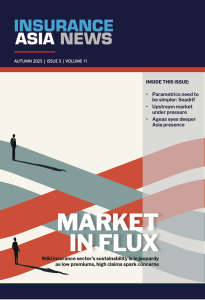Cybersecurity certifications are often waved like talismans in boardrooms and underwriting meetings. These badges of honour decorate websites and annual reports, offering comfort to insurers, investors, and partners.
But this comfort may be dangerously misplaced.
The fundamental flaw in our reliance on certifications lies in their very nature – they’re frozen moments in time. When an organisation displays its ISO 27001 certification, it’s showing proof of compliance at the moment of audit, not proof of its current security posture.
Considering that the average time to detect a data breach is still 204 days, a company can maintain its certification while being completely compromised.
This temporal disconnect creates significant problems across industries. Financial institutions might require PCI DSS compliance from vendors handling credit card data, yet major breaches still occur at “compliant” organisations.
Healthcare providers in the US achieve HITRUST certification to satisfy HIPAA requirements, only to suffer ransomware attacks months later.
The insurance industry faces particular challenges in this environment.
A false dichotomy
Underwriters reviewing cyber policies often treat certifications as risk mitigants, yet there’s little correlation between holding certifications and avoiding breaches.
A company could have a perfect SOC 2 attestation while neglecting basic patch management. Another might maintain PCI DSS compliance while failing to monitor for credential stuffing attacks.
The uncomfortable truth is that certifications, while valuable for establishing a baseline security posture, create a false dichotomy between being “certified” and being “secure.”
“True security requires continuous monitoring and improvement of the security posture, which periodic assessments and audits simply cannot provide.”
It is important to remember that most standards are designed to provide only the absolute basic controls for establishing a security posture.
If a standard becomes too prescriptive, it can stop organisations from using it. Further, the scope of the certification audit may not be the same as what is to be insured.
This isn’t to say certifications lack value – they establish important frameworks and demonstrate initial commitment and a baseline security posture. But they were never designed to be the finish line.
True security requires continuous monitoring and improvement of the security posture, which periodic assessments and audits simply cannot provide.
How do you know you’re secure today?
The most sophisticated organisations now supplement certifications with real-time monitoring, automated threat detection, third-party audits, and continuous improvement processes.
They understand that security isn’t a state to achieve but a process to maintain and improve on.
 For insurers, rather than treating certifications as sufficient proof of security, they should demand evidence of ongoing monitoring of their security posture.
For insurers, rather than treating certifications as sufficient proof of security, they should demand evidence of ongoing monitoring of their security posture.
This might include regular vulnerability scan reports, incident response testing logs, or third-party assessments and audits of the security posture.
The question shouldn’t be, “Do you have certification X?” but rather “How do you know you’re secure today?”
The cybersecurity landscape evolves too quickly for annual checkups to be sufficient. As threats grow more sophisticated and attack surfaces expand, our approach to assurance must keep pace.
Certifications can be part of the solution, but only if we stop treating them as the complete answer.
The organisations that understand this – those that view security as a continuous journey rather than a destination – will be the ones truly managing their risk.
Everyone else is just waiting for their next audit.
This article is written by Marc Krisjanous, associate director of audit at SixBlocks Audit, and Qubit Underwriting CEO Helen Ye.
-
W&I: Balancing growth, commerciality and sustainability in Asia Pacific’s W&I market
- November 6
Warranty and indemnity (W&I) insurance is now being utilised with increasing frequency across a far broader range of deal sizes and geographies in the region.
-
Nuclear: Insurance sector’s role in the region’s nuclear renaissance
- October 21
The biggest driver of nuclear expansion in Asia is the massive increase in power demand from data centres, while the real transformation will be driven by small modular reactor technology.
-
Aviation : Growing pains in Asia’s maintenance industry will have implications for insurers
- July 28
Lack of talent, training, infrastructure, and oversight emerge with Asia Pacific is on track to become the world’s largest aircraft maintenance, repair and overhaul (MRO) market by 2030.
-
Trade credit: Amid trade war, APAC firms must stay agile and ensure adequate protection
- April 2
The US has implemented a new tariff regime across industries and countries, with import duties being a central aspect of US economic and foreign policy. These measures aim to protect domestic industries from what the US government perceives as unfair trade practices, global excess capacity, and imbalanced trading relationships. The policy includes mainland China, delayed […]
-
Beazley | What does cyber protection look like from day 1 to day 600 and beyond?
Cybersecurity is no longer just an IT concern, but a governance issue that belongs on the boardroom agenda.
-
Sedgwick | Preparing for the next storm
Insurance industry needs to recalibrate, invest in innovation and strengthen systems, talent and data practices.
-
Peak Re | From climate modelling to market opportunity: Forging a new clarity on Southeast Asia’s climate risk
Southeast Asia's protection gap: a crisis of clarity, not just capital
-
BHSI WICare+ | Accelerating Payments, Empowering Recovery
Launched in cooperation with Steadfast’s Singapore network, WICare+ fills the gaps found in traditional coverage and keeps businesses and their workforce secure by covering up to SG$350,000 in medical expenses per claim.


Marc Krisjanous, SixBlocks Audit
Cybersecurity: The false promise of flawed certifications
Marc Krisjanous, SixBlocks Audit